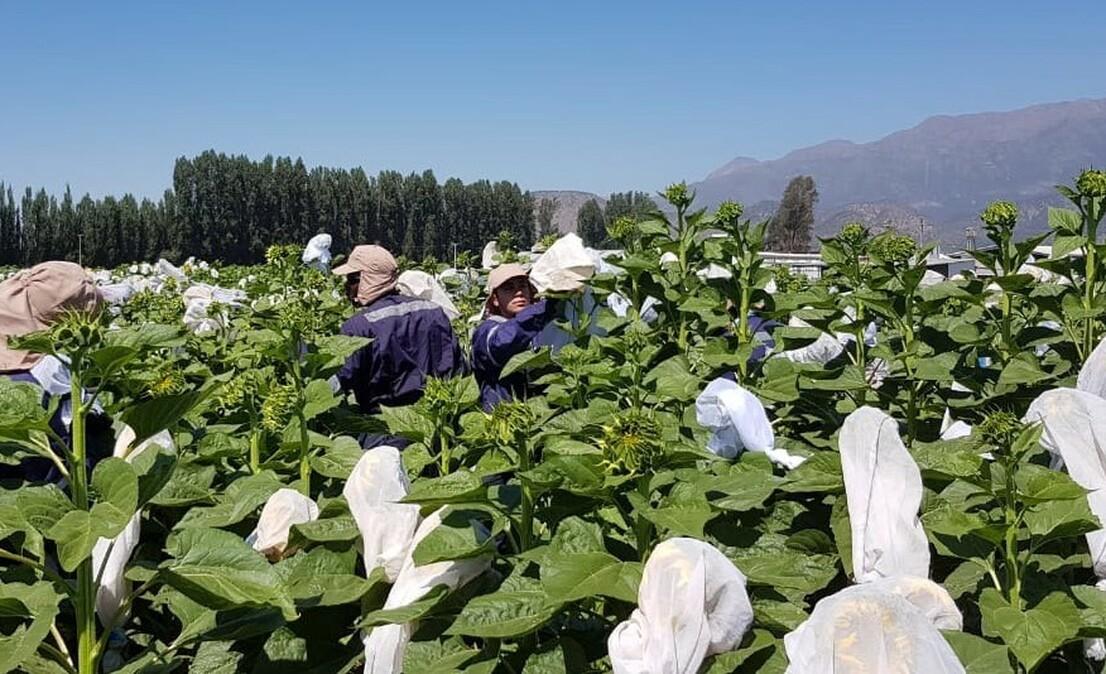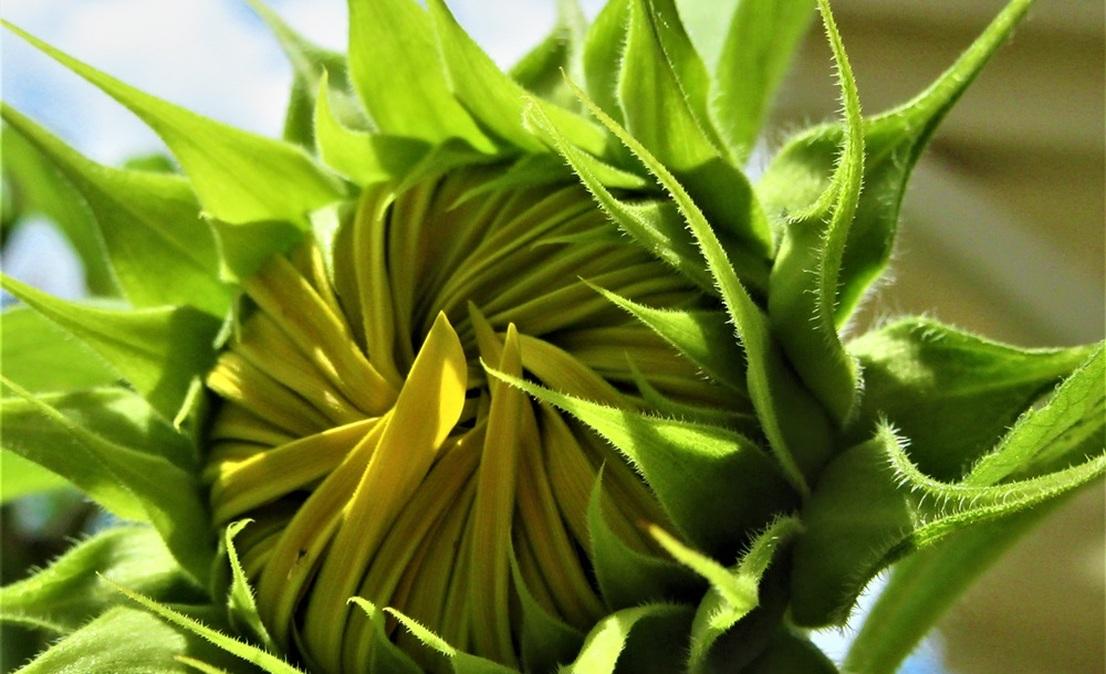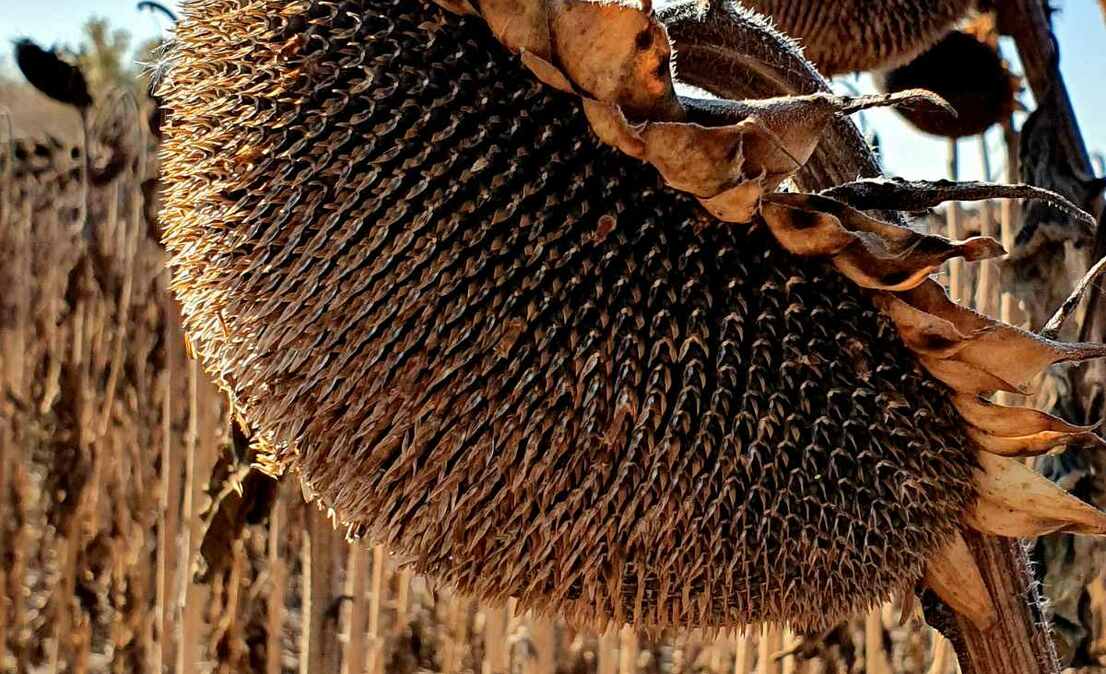Choosing the right hybrid
The criteria for a farmer to decide which hybrid to buy are simple. He wants to get a super hybrid that will contain full resistance to all diseases and sunflower broomrape (Orobanche cumana L.), especially to the most aggressive races, and we should not forget about herbicide resistance, and of course, with high yield potential.

When developing a hybrid, the breeder wants to create a super soldier that will combine herbicide resistance with resistance to sunflower broomrape (Orobanche cumana L.), disease resistance, and especially downy mildew, with high yield potential. VNIS has created a unique breeding base that includes the use of wild species, varieties and lines from sunflower genebanks, a platform for testing hybrids for disease resistance, marker technologies, modeling hybrids for growing different crops, etc.
Early maturity of hybrids
The relevance of early maturing hybrids is driven by changing climatic conditions. This trait allows for faster plant maturation and minimizes the possibility of high temperatures affecting the completeness of pollination of the basket. Usually, the flowering period of sunflower coincides with high peak temperatures in July, and early-ripening sunflower hybrids may already be in the phase of milk ripeness, in any case, the impact of harmful high temperatures on the crop's pollen will be less. The most optimal hybrids are those with a growing season of 100-110 days. Sunflower hybrids with a growing season of 85-95 days are usually used for stubble sowing, such as the Ukrainian Sunshine and Atilla hybrids.
Increasing resistance to biotic and abiotic environmental conditions
In recent years, due to crop rotation disruptions and an increase in sunflower acreage, the harmfulness and aggressiveness of infectious disease pathogens such as phomopsis, downy mildew, white and gray molds, and Fusarium rot have increased. In this regard, breeders are faced with the task of creating a new generation of hybrids that should be more drought-resistant, resistant or tolerant to the most damaging infectious diseases and other environmental factors. Breeding is the most cost-effective and environmentally friendly way to combat phytodiseases. To create resistant self-pollinated lines and hybrids, we use mechanisms of phytoimmunity formation and express methods for predicting and selecting resistant sunflower genotypes. The selection process selects hybrids that can withstand environmental stressors and maximize their potential in different climatic conditions.

Genetic resistance to new races of broomrape
The use of hybrids with high genetic resistance to broomrape allows avoiding the manifestation of this parasite or partially reducing it in the fields if it has already appeared. Since the process of mutation of new races of broomrape is continuous and constantly progressing, the creation of sunflower hybrids genetically resistant to new races of Orobanche cumana L. is a key area of breeding. Also equally important is resistance to downy mildew (Plastopara helianthi Hov.), which in the wettest areas can be very aggressive and cause significant damage to the crop.
Herbicide tolerance (SU) and (IMI)
The main objective of this area of sunflower breeding is to facilitate weed control. Using specialized hybrids that are resistant to herbicides containing tribenuron-methyl (SU), it is possible to treat sunflower crops with post-emergence systemic herbicides (Express, Alpha-Star, Granstar Pro, etc.). Herbicides of this group act on a wide range of annual dicotyledonous weeds, unlike traditional soil-applied herbicides.
Advantages of using this SU technology:
- the only way to control thistle in the period after sunflower emergence;
- flexibility in the time of herbicide application - from 1 to 4 pairs of true leaves in sunflower;
- the possibility of applying the herbicide with different consumption rates or in two stages, depending on the weediness of the field and the specific field situation;
- no restrictions on sowing the next crop in the crop rotation.
IMI sunflower hybrids, which are genetically resistant to imidazolinone herbicides, allow growing the crop in fields with the most problematic weeds: ragweed, nedraba, cyclohexa, etc., as well as with a high level of sunflower broomrape infestation.
High oleic hybrids
The area under high-oleic sunflower is growing in our country. This suggests that there is a growing demand for healthy and high-quality oils as the population increasingly turns its attention to healthy eating. This type of hybrid is characterized by a high content of oleic acid (more than 90%) and no more than 10% of fatty acids. The oil also contains a high amount of vitamin E, which is a natural antioxidant, easily absorbed by the human body and is more beneficial. It can be equated to olive oil.
The Ukrainian Scientific Institute of Breeding has already created two high-oleic hybrids. Next year, the company plans to launch them into production, as they have passed all the tests and are included in the State Register of Plant Varieties. The first hybrid is characterized by oleic acid content of 95-97%, resistance to broomrape race 7 (G) and resistance to tribenuron-methyl. The second one contains 94-97% oleic acid, has resistance to 6 races of broomrape (F) and resistance to imidazolines.

In terms of technology, the most important thing is to maintain spatial isolation. We should not forget that the amount of oleic acid depends on this. Otherwise, it is practically the same as the technology for conventional sunflower.
All areas of sunflower breeding are aimed at one key goal - increasing the productivity of the hybrid and unlocking its genetic potential in different soil and climatic conditions.

Results of breeding work
As science does not stand still, new methods and approaches are increasingly being used to speed up the breeding process. For example, the use of immature germ culture and molecular biology methods.
A good example of hybrids created using modern technologies is the new Euro and Shannon varieties from VNIS. When creating the parental components, breeders used such methods as molecular markers (to isolate sterility fixers from the pool of sister lines), field and laboratory analysis of resistance to sunflower broomrape (Orobanche cumana L.). At each stage, resistance to imidazolinone (IMI) and tribenuron-methyl (SU) herbicides was monitored simultaneously. These hybrids have been developed for 7 years, the genetics of the hybrids combine resistance to sunflower broomrape (G race), resistance to imidazolinone herbicides (IMI) - Euro hybrid and tribenuron-methyl (SU) - Shannon hybrid, high heat and drought resistance, and are characterized by high yields.

 Choose a country
Choose a country